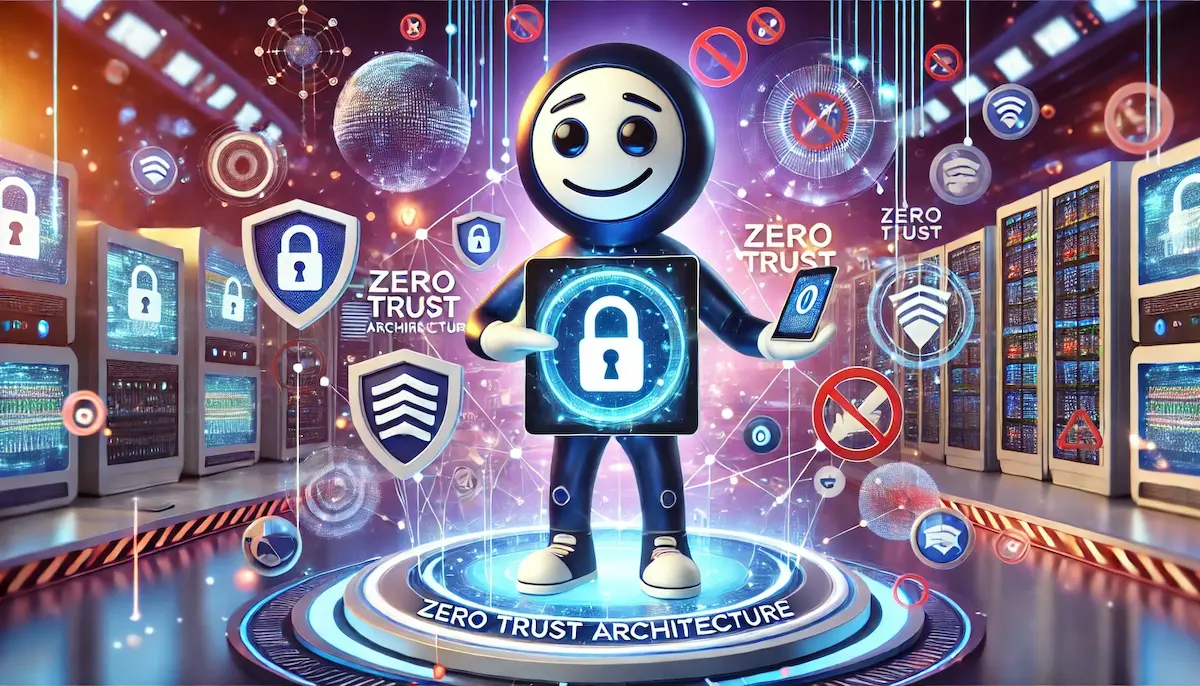Zero Trust Architecture (ZTA) is a security model that assumes that threats can come from both inside and outside the network. It operates on the principle of “never trust, always verify,” requiring continuous validation of user and device identities and strict enforcement of access controls, regardless of their location within or outside the network perimeter.
What is Zero Trust Architecture?
ZTA is a comprehensive security framework designed to protect an organization’s IT resources by minimizing the risk of unauthorized access and data breaches. Unlike traditional security models that rely on a secure network perimeter, ZTA assumes that every user, device, and network flow is untrusted and must be verified before gaining access to sensitive resources.
Key Principles of Zero Trust
The core principles of Zero Trust Architecture include:
- Verify Every Access Attempt: Continuously authenticate and authorize every request for access, regardless of the source.
- Implement Least Privilege Access: Grant users and devices the minimum level of access necessary to perform their tasks.
- Micro-Segmentation: Divide the network into smaller, isolated segments to limit lateral movement and contain potential breaches.
- Assume Breach: Design security measures with the assumption that a breach has already occurred, and focus on detecting and mitigating threats quickly.
- Continuous Monitoring and Validation: Regularly monitor user activities and network traffic to identify and respond to suspicious behavior in real time.
Components of Zero Trust Architecture
Implementing ZTA involves several key components:
- Identity and Access Management (IAM): Ensures that only authenticated and authorized users can access resources.
- Multi-Factor Authentication (MFA): Adds an extra layer of security by requiring multiple forms of verification for access.
- Network Segmentation: Divides the network into smaller, isolated segments to prevent lateral movement by attackers.
- Endpoint Security: Protects devices that connect to the network, ensuring they comply with security policies.
- Data Encryption: Encrypts data both in transit and at rest to protect it from unauthorized access.
- Security Information and Event Management (SIEM): Provides real-time analysis of security alerts and logs to detect and respond to threats.
- Continuous Monitoring: Regularly tracks user activities and network traffic to identify anomalies and potential security incidents.
Benefits of Zero Trust Architecture
Adopting a Zero Trust Architecture offers several significant benefits:
- Enhanced Security: By continuously verifying identities and enforcing strict access controls, ZTA reduces the risk of unauthorized access and data breaches.
- Reduced Attack Surface: Micro-segmentation and least privilege access minimize the potential impact of a breach.
- Improved Compliance: ZTA helps organizations meet regulatory requirements by providing robust access controls and monitoring capabilities.
- Adaptability: ZTA can be applied to various environments, including on-premises, cloud, and hybrid infrastructures, making it suitable for modern IT landscapes.
- Better Visibility and Control: Continuous monitoring and real-time analytics provide greater visibility into network activities and enable faster response to threats.
Implementing Zero Trust Architecture
Implementing ZTA involves a structured approach:
- Assessment: Evaluate the current security posture and identify gaps and vulnerabilities.
- Strategy Development: Define a comprehensive Zero Trust strategy that aligns with organizational goals and security requirements.
- Technology Selection: Choose the appropriate technologies and solutions to support the Zero Trust model.
- Pilot and Testing: Implement ZTA in a controlled environment to test its effectiveness and identify potential issues.
- Deployment: Roll out the Zero Trust model across the organization, ensuring proper configuration and integration with existing systems.
- Continuous Improvement: Regularly review and update the Zero Trust framework to adapt to evolving threats and organizational changes.
The Future of Zero Trust Architecture
As cyber threats continue to evolve, Zero Trust Architecture is becoming increasingly critical for modern cybersecurity strategies. Future developments in ZTA are likely to include:
- Artificial Intelligence and Machine Learning: Leveraging AI and ML to enhance threat detection and response capabilities.
- Integration with IoT Security: Extending Zero Trust principles to secure Internet of Things (IoT) devices, which present unique security challenges.
- Automated Threat Response: Implementing automated response mechanisms to quickly mitigate detected threats.
- User Behavior Analytics: Using advanced analytics to understand and predict user behavior, improving the accuracy of threat detection.
Blockfine thanks you for reading and hopes you found this article helpful.
